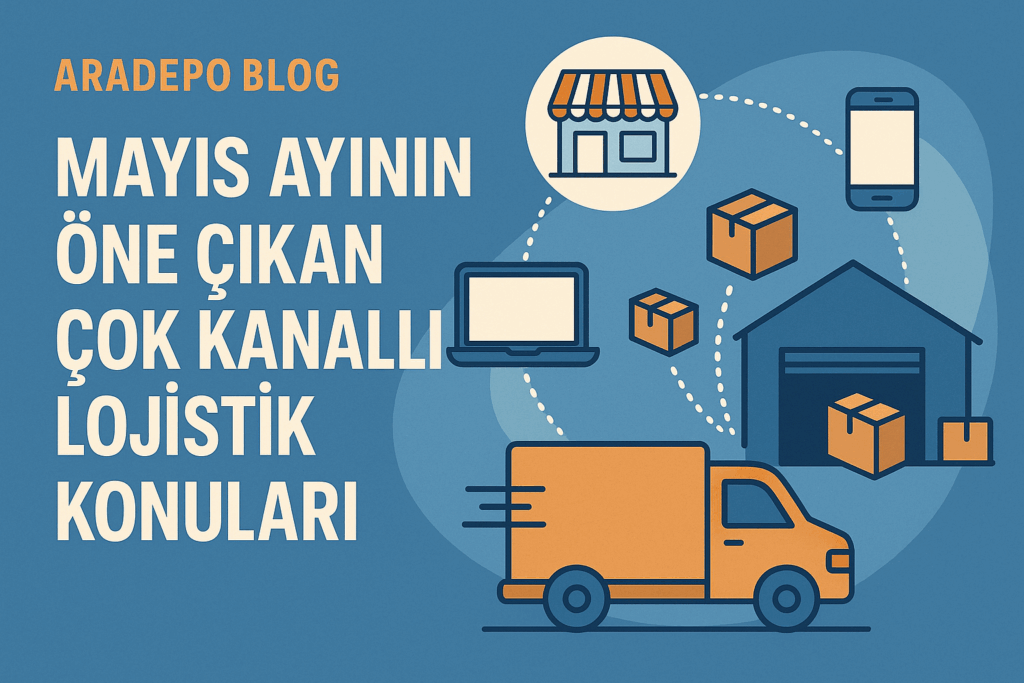The First Step in Your Export Journey: Adapting Your Products to Global Markets
Navigating the process of shipping and preparing products for the United States presents both significant opportunities and challenges for businesses. In the first part of this article, we will focus on the adaptation processes that will make your products successful in foreign markets, especially in large and competitive markets like the United States.
One of the first and most crucial steps you'll encounter on your export journey is adapting your products to the needs, standards, and expectations of different markets. When entering the American market, it's essential to ensure that your products align with American consumer standards, regulations, and expectations. This process requires not only technical compliance but also a deep understanding of the culture and thorough market analysis.
Market Research: Where to Start?
The product adaptation process begins with proper market research. Understanding which markets are most suitable for your product is the first step in this journey. Analyzing market needs, consumer behaviors, and local competition is crucial in shaping your strategy.
Local Standards and Regulations
Before introducing your product to a new market, it's essential to determine whether it complies with the specific standards and regulations of that market. Specific requirements such as the CE Mark for the European Union or the CCC certification for the Chinese market are key to the acceptability of your products in these markets.
Technical Adaptation: Electrical and Electronic Products
When it comes to electrical and electronic products, voltage adaptations and plug types are crucial aspects of adaptation. These technical details ensure that your products can be seamlessly used in international markets.
Advantages of Free Trade Agreements
Free trade agreements signed by the United States with 20 countries can provide significant facilitation in certification and regulations. These agreements mean lower tariffs and less bureaucracy for your export products.
Compliance with Environmental Standards
As environmental awareness increases worldwide, compliance with energy efficiency and sustainability standards for products becomes even more crucial. This is particularly important in markets with stringent environmental regulations such as the European Union, where it can enhance the competitiveness of your products.
Challenges and Solutions in Shipping Products to America
We'll discuss some common challenges you might face when shipping products to the United States and explore strategies to overcome them. From technical issues like power outages and electrical fluctuations to product labeling and marking, this section will cover various topics to help you successfully introduce your products to global markets.
We've examined the fundamental challenges you may encounter when exporting and discussed adaptation strategies to address these challenges. In the second section, we'll provide more detailed information on cultural alignment and effective marketing strategies, which play a critical role in the success of your products in foreign markets.
Product Preparation: Ensuring Cultural Compatibility of Your Products
To succeed in global markets, it's not enough for your products to just meet physical needs. They also need to be compatible with the cultural values, norms, and expectations of your target market. This compatibility extends to subtle details that deeply influence consumer preferences.
The Meaning of Cultural Differences and Marketing
Colors, symbols and even numbers can mean very different things in different cultures. For example, a color may represent luck and joy in one culture, but mourning and loss in another. Therefore, taking such cultural specificities into account in your marketing materials and product design helps your brand to be perceived in a positive way.
The Importance of Brand and Product Names
Care should be taken to ensure that your product or brand names are not misunderstood or negatively perceived in the target market. Puns, slang and double meanings in the local language can damage your brand when mistranslated. A successful brand name should create a positive connotation in the language and culture of your target market.
Respecting Local Traditions
When creating your advertising campaigns and marketing strategies, paying homage to local traditions, holidays and celebrations in your target market helps you build a strong connection with consumers. Brands that celebrate and value important elements of local culture are often received more warmly and sincerely.
Culturally Responsive Marketing Campaigns
An effective marketing campaign should prioritize cultural sensitivities in your target market. This means delivering culturally relevant messages in your product's advertising, social media content and public relations activities. Demonstrating cultural awareness increases brand loyalty and customer trust.
Legal Basics of Exporting: What Should You Know?
Export transactions are subject to a complex set of legal regulations. These regulations are in place to ensure the smooth functioning of international trade, protect consumers and support local industries. As exporters, you need to be aware of and comply with these legal requirements before sending your products to another country.
Export Licenses and Controls
Some products, particularly high-tech products, defense-related materials and some chemicals, require special licenses for export. These licenses are often considered in the context of national security, foreign policy and trade regulations. Export license requirements may vary depending on the type of your product and your target market.
Customs Regulations and Tariffs
Exporting businesses should have detailed knowledge of the customs regulations, tariff classifications and tax obligations of the destination country. Customs clearance is important to ensure that your products cross the border quickly and efficiently. In addition, the tariff rates of the destination country can affect the final cost and market competitiveness of your products.
Prohibited and Restricted Products
Certain products may be banned or restricted in some countries. These restrictions are imposed for a variety of reasons, such as environmental protection, public health and safety or the protection of local industries. When making your export plans, researching such restrictions in your target market in advance will help you avoid potential problems.
Compliance and Sanctions
When operating in international markets, you need to comply not only with the laws of the target country, but also with international sanctions and regulations. This is especially important when trading with certain countries, as sanctions on these countries can pose additional legal challenges for exporters.
The legal aspects of the export process represent a complex area that businesses need to understand and adapt to in order to successfully enter international markets. In the fourth and final section, we will focus on resources and support services to help you succeed in your export operations. This support can help you overcome legal challenges and achieve sustainable success in global markets.
The Key to Success for Product Shipping to America: Product Preparation
When you exporting to US The key to success when exporting to America is meticulous preparation and planning. It is important to pay attention to both technical and regulatory requirements to ensure your products enter the US market smoothly.
Product Standards and Compliance
Before entering the US market, you need to make sure that your products comply with American standards and regulations. This ranges from safety standards for electrical appliances to health and hygiene regulations for food and beverages. In particular, attention should be paid to US safety standards and labeling requirements for consumer products.
Customs and Import Procedures
Before shipping your products to the US, it is important to familiarize yourself with customs and import procedures. This includes determining the correct tariff classifications, preparing the necessary import documentation and understanding potential customs duties. In addition, the documents and information required by US Customs and Border Protection (CBP) must be complete and accurate.
Logistics and Transportation
Shipping products to America requires thorough logistics planning. It is important to choose a reliable transportation partner to ensure that your goods arrive at their destination on time and safely. When evaluating your shipping options, you need to consider factors such as costs, delivery times and packaging requirements.
Market Research and Customer Needs
Entering the US market is not only about meeting legal and technical requirements; it also requires understanding the needs and preferences of your target audience. By conducting detailed market research, you can determine how your products can adapt to the expectations of American consumers. This can shape every aspect of your business, from product design to marketing strategies.
Exporting to the United States means opening the doors to a huge market. However, to make the most of this opportunity, you need to be careful and deliberate in the product preparation and shipping processes. The points we have discussed are the basis for successful exporting to the United States. With proper preparation and planning, you can achieve sustainable success in the American market.




